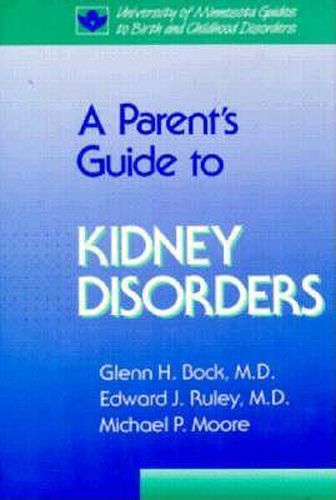Readings Newsletter
Become a Readings Member to make your shopping experience even easier.
Sign in or sign up for free!
You’re not far away from qualifying for FREE standard shipping within Australia
You’ve qualified for FREE standard shipping within Australia
The cart is loading…






The fifth volume of the University of Minnesota Guides to Birth and Childhood Disorders is designed to help parents, as well as older children and adolescents, understand the causes, diagnosis, and treatment of kidney disorders. Like all volumes in the series, A Parent’s Guide to Kidney Disorders integrates basic, diagnostic, and therapeutic information, and includes numerous case studies, photographs, and a glossary defining unfamiliar terms. A Parent’s Guide to Kidney Disorders explains the basic anatomical and functional characteristics of the kidney, and relates these characteristics to many of the kidney diseases that may occur in childhood. In addition, the authors offer guidance and advice for parents and patients on coping effectively with the psychological effects of chronic illness on the family. Practical information on agencies providing support services is also given. In clear and approachable language, A Parent’s Guide to Kidney Disorders offers an invaluable family resource for all those facing the challenge of kidney disease.
$9.00 standard shipping within Australia
FREE standard shipping within Australia for orders over $100.00
Express & International shipping calculated at checkout
The fifth volume of the University of Minnesota Guides to Birth and Childhood Disorders is designed to help parents, as well as older children and adolescents, understand the causes, diagnosis, and treatment of kidney disorders. Like all volumes in the series, A Parent’s Guide to Kidney Disorders integrates basic, diagnostic, and therapeutic information, and includes numerous case studies, photographs, and a glossary defining unfamiliar terms. A Parent’s Guide to Kidney Disorders explains the basic anatomical and functional characteristics of the kidney, and relates these characteristics to many of the kidney diseases that may occur in childhood. In addition, the authors offer guidance and advice for parents and patients on coping effectively with the psychological effects of chronic illness on the family. Practical information on agencies providing support services is also given. In clear and approachable language, A Parent’s Guide to Kidney Disorders offers an invaluable family resource for all those facing the challenge of kidney disease.